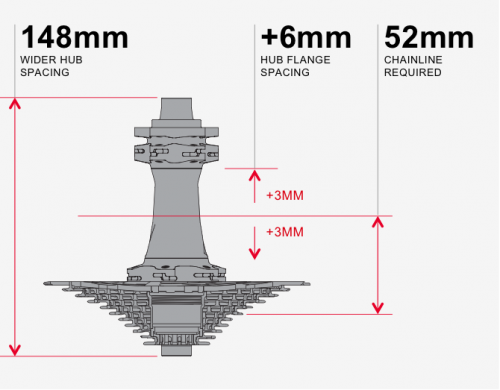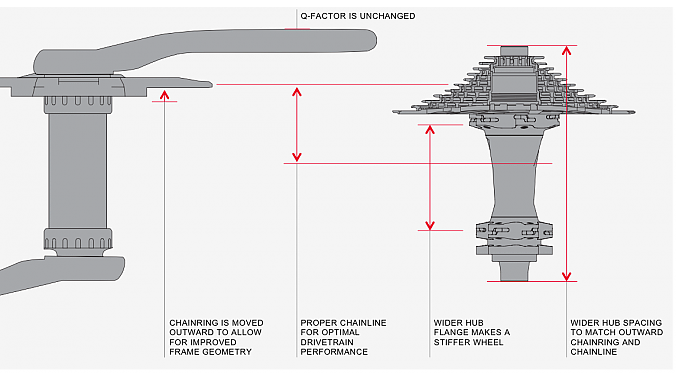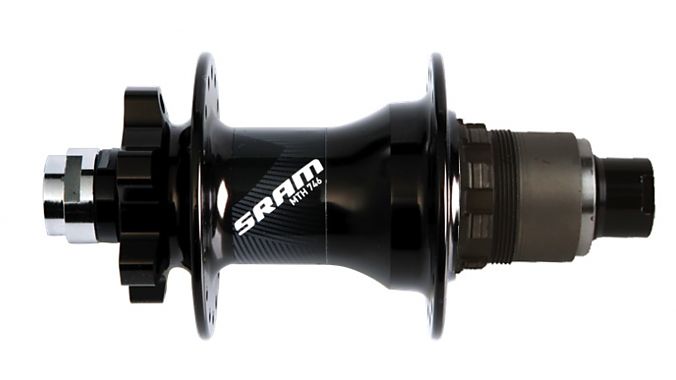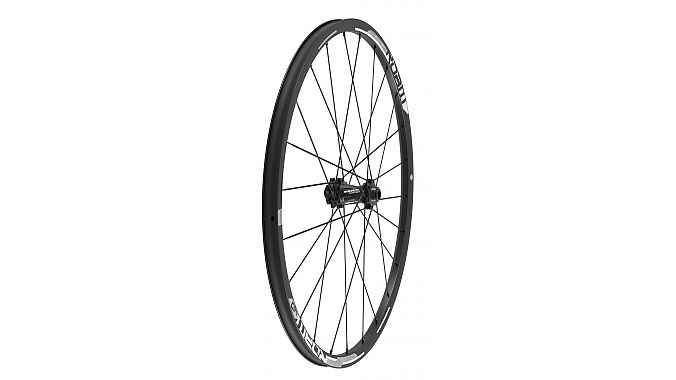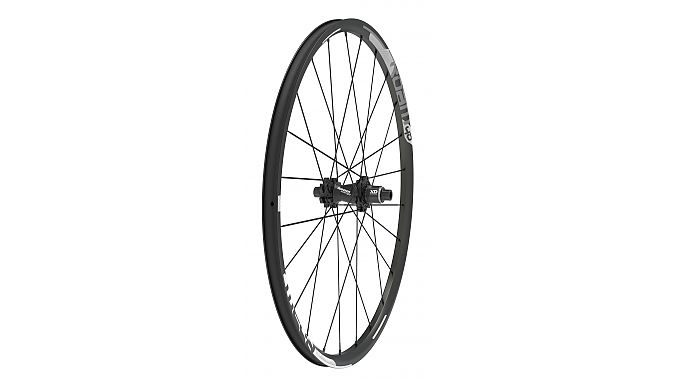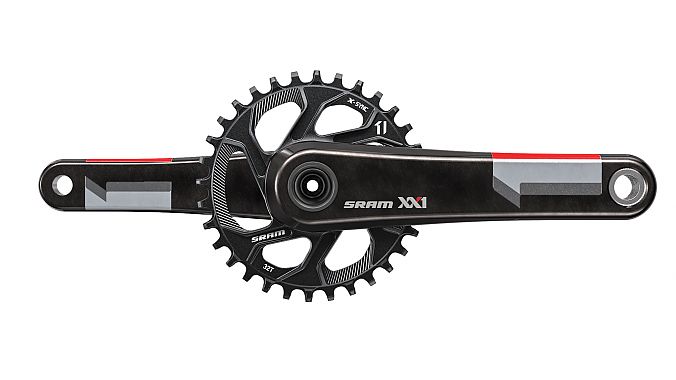CHICAGO (BRAIN) — SRAM is making a big push for 148mm OLD rear spacing on mountain bikes, which the company says produces a stiffer wheel and allows the drivetrain to be shifted to the right, further increasing clearance for wider tires and other advantages.
Trek began using a 148mm thru axle on some mountain bike models last year. SRAM is building on that with a full system it calls Boost that involves the drivetrain and rear hub, as well as a 110mm front thru axle. SRAM is making cranks, hubs and RockShox suspension fork models to work with the Boost system.
The company said the advantages of Boost include:
- Increased wheel stiffness and durability
- Better riding efficiency and bike handling precision
- Improved frame geometry with shorter chain stays
- Wider and stiffer suspension pivots
- Wider range of chainring options
- More clearance for bigger tires
The Boost-specific cranks position the chainrings 3mm farther to the right than standard. SRAM points out that Boost cranks are not compatible with standard drivetrains. The company said it was able to move the chainline out without affecting Q-factor (the distance between pedals).
Boost was inspired by the use of larger, 27.5-inch and 29-inch wheels. It allows wider spoke flange spacing, producing a wider spoke-bracing angle and stiffer wheels. A Boost rear wheel's spoke flanges are 3mm further outboard on each side, making a rear 29er wheel as stiff as a 27.5 standard wheel. Up front, each flange is 5mm further outboard, making a Boost 29er front wheel as stiff as a standard 26-inch wheel.
The wider axle spacing also is well suited for super-wide rims and tires. The Boost-compatible 29er RockShox forks also fit 27.5-plus wheels and tires up to 27.5 x 3.0. Depending on the tire choice, 27.5-plus tires have nearly the same outer diameter as standard 29-inch tires.
"For a long time now, SRAM had been looking for a way to open up more room around the crankset for frame designers to further optimize their bikes. SRAM 1x was the first step in this direction by eliminating the need for a front derailleur. However, SRAM also had hopes to move the chainline outboard as well. It wasn't until an OE came to us with a similar goal that we were able to realize this hope," a SRAM press release said. The press release doesn't name the OE, but the release features a photo of a Trek mountain bike.
To start SRAM will offer Boost compatible cranks in its XX1 and X1 1400 models, with 24mm spindles only.
Boost wheels will be offered in SRAM's ROAM 40 models, both 27.5-inch and 29-inch. Boost hubs will be available in the X0 and MTH 700 Series hubs.
The company said its $272 X1 Boost crank is available now, as are conversion caps to convert many of its 12x142 mountain bike rear wheels to the 148 spacing. The conversion kits are available for its Rise 60, Roam 30, Roam 40 and Rise XX wheels, and its XO hubs, with standard cassette bodies or XD driver bodies.
Other SRAM hubs, wheels, cranks and 148mm Maxle thru axles will be available in May or June. Model year 2016 RockShox forks in the SID, Reba, Pike models will be available with the new 110x15mm spacing.
SRAM's RS-1 fork introduced last year also has 110 axle spacing, but the RS-1's Predictive Steering hubs are not compatible with the new Boost front hubs.

